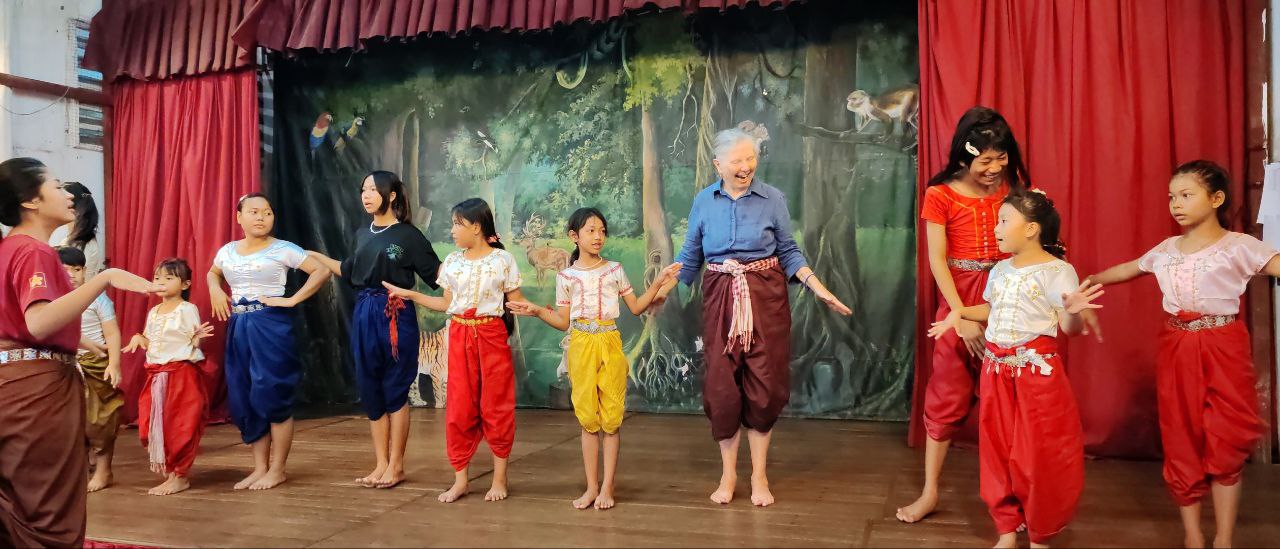
What does it mean to be a tourist in a land with a heritage of colonialism, riven with the aftereffects of genocide? Each person picks their own path, I guess. The hedonists might head for Pub Street in Siem Reap where the bass thumps and the alcohol flows. Innocent enough compared with the sex tourists seeking girls younger than their granddaughters, shamelessly cruising the redlight streets of Phnom Penh that run down to the Mekong.
Others with stronger nerves or perhaps greater indifference might tour the killing fields and the ordinary schoolhouse (S-21) that for four years was a central site of interrogation, torture, and murder during the time of the Khmer Rouge. Now renamed the Tuol Sleng Genocide Museum, it warehouses skulls and bones and images and infinite suffering. These are regular points of call for those who can face them. I could not.
I was not indifferent. Everywhere the legacy of colonialism and the ghosts of genocide and civil war were as ubiquitous as the broken pavement. So, too, was the strength and resilience of Khmer culture, springing up in the cracks left by painful history. History is too big, too overwhelming. I can only deal with specific encounters and what they reveal of suffering and of redemption.
My first evening in Cambodia I ate with friends at the ominously named Titanic, a restaurant on the banks of the river. The food was good, the cats wandered at will, and I was mesmerised by the dancer and musician who performed for the patrons. Such precise and elegant gestures: only achievable with genetic gifts and years of training. Dance calls to me, always, and I wondered if it might be possible to attend a workshop. Because . . . why not?
Some strange sprite of fate was at work. Back in my hotel room I did a little research. Directly across the narrow alley way in front of the hotel was an even tinier alley leading directly to the Champey Academy of Arts.
Others with stronger nerves or perhaps greater indifference might tour the killing fields and the ordinary schoolhouse (S-21) that for four years was a central site of interrogation, torture, and murder during the time of the Khmer Rouge. Now renamed the Tuol Sleng Genocide Museum, it warehouses skulls and bones and images and infinite suffering. These are regular points of call for those who can face them. I could not.
I was not indifferent. Everywhere the legacy of colonialism and the ghosts of genocide and civil war were as ubiquitous as the broken pavement. So, too, was the strength and resilience of Khmer culture, springing up in the cracks left by painful history. History is too big, too overwhelming. I can only deal with specific encounters and what they reveal of suffering and of redemption.
My first evening in Cambodia I ate with friends at the ominously named Titanic, a restaurant on the banks of the river. The food was good, the cats wandered at will, and I was mesmerised by the dancer and musician who performed for the patrons. Such precise and elegant gestures: only achievable with genetic gifts and years of training. Dance calls to me, always, and I wondered if it might be possible to attend a workshop. Because . . . why not?
Some strange sprite of fate was at work. Back in my hotel room I did a little research. Directly across the narrow alley way in front of the hotel was an even tinier alley leading directly to the Champey Academy of Arts.
I presented myself the following morning and asked if it was possible to do a workshop. It was. I booked for the next day. Thus ensued an exhilarating and challenging hour where I joined the children, going through their warmups (my stiff, sixty-eight-year-old body notwithstanding).
Then, together with them, I learned the butterfly dance, the first one learned by all aspirants on that long journey. After going through the individual steps, we all performed it twice with live music from some traditional Khmer instruments: the roneatek (xylophone) and sampho (small double-headed barrel drum). Strong childhood memories of hundreds of ballet classes with a live pianist!
So much that was similar; so much that was worlds apart. There I was from a different culture, a vastly different age . . . and the extraordinary magic was that it simply did not matter. I had been garbed by the dance teacher in traditional style in preparation for class. As we went through the warmup, small hands would gently guide my foot or arm into the correct position. During the performance I had two wing-women: on one side a tiny child of not much more than seven; on the other a trans girl of maybe twelve or thirteen years. As the pattern of the dance shifted from side to side, I looked at one or the other and with no mutual language other than dance we worked together.
So much that was similar; so much that was worlds apart. There I was from a different culture, a vastly different age . . . and the extraordinary magic was that it simply did not matter. I had been garbed by the dance teacher in traditional style in preparation for class. As we went through the warmup, small hands would gently guide my foot or arm into the correct position. During the performance I had two wing-women: on one side a tiny child of not much more than seven; on the other a trans girl of maybe twelve or thirteen years. As the pattern of the dance shifted from side to side, I looked at one or the other and with no mutual language other than dance we worked together.

 RSS Feed
RSS Feed
